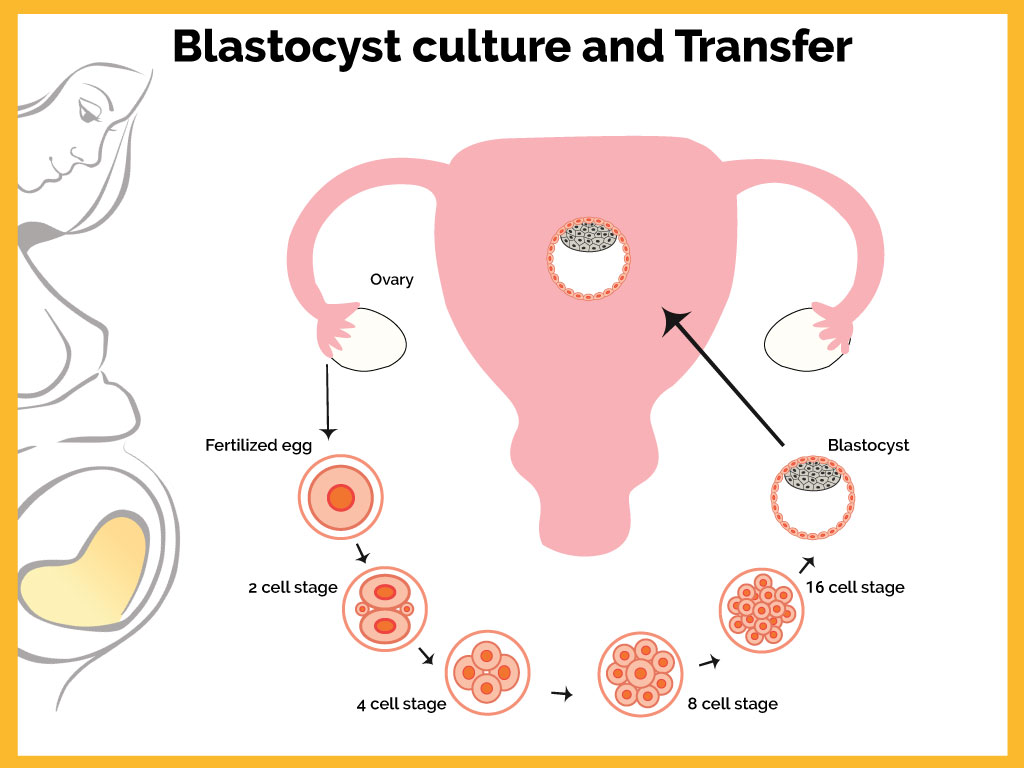Blastocyst culture and transfer
Blastocyst culture refers to growing the embryos in the laboratory for two more days after which the blastocyst embryos are transferred to the woman’s uterus on Day 5. In usual IVF/ICSI treatment, embryo transfer takes place two or three days after egg collection when the embryo contains around six to eight cells. However, embryos cultured for five or six days, have numerous cells and start to form two distinct layers, giving the embryos more opportunity to prove their developmental potential. As some fertilised eggs can stop developing prior to fifth day, the embryologist can choose the best embryo more accurately for transfer, increasing the chances of pregnancy.
The process of blastocyst culture and transfer
Culture: Human embryos are best chosen on Day 3 in the body, but since blastocyst culture has several embryos to choose from, it gives a better chance of transferring an embryo which will lead to a successful pregnancy. With blastocyst implantation, a transferred blastocyst will implant much more quickly, making success rates higher than the transfer of Day 3 embryos.
Transfer: The final stage of the process is the transfer of the embryo to the womb. A catheter holding the embryo is gently inserted into the cervical channel and into the uterine cavity guided by ultrasound. The catheter is then removed and checked to make sure the embryo has been transferred. After the transfer, you can return to normal with the embryo quite safe within the uterus. A pregnancy test done 12 days later ensures the success of the treatment.
Advantages of blastocyst culture and transfer
The biggest advantage of the blastocyst culture and transfer method is that it significantly reduces the risk of multiple pregnancies. Also, the pregnancy and implantation success rate are higher in this technique as it is easy to determine the robust embryos after developing for 4-6 days, hence, only the competent embryo is transferred to the uterus.


















